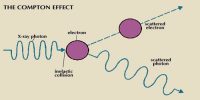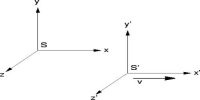n-type and p-type Materials are Electrically Neutral
n-type and p-type semiconductors it is known that from pure or intrinsic germanium or silicon in what type of crystal the semiconductors will be formed will depend on the number of valence electrons of impurities. If the number of valence electrons is larger than the number of valence electrons of the intrinsic semiconductor then it will be an n-type semiconductor and if less than that then it will be a p-type semiconductor. An n-type material by itself has mainly negative charge carriers (electrons) which are able to move freely, but it is still neutral because the fixed donor atoms, having donated electrons, are positive. Similarly p-type material by itself has mainly positive charge carrier (holes) which are able to move relatively freely, but it is still neutral because the fixed acceptor atoms, having accepted electrons, are negative.
But n-type and p-type semiconductors are electrically neutral. This is because that excess negative electron of an n-type crystal is balanced by the positively charged nucleus of an arsenic atom. On the other hand, positively charged hole produced in the p-type crystal is balanced by the excess negative charge of the germanium-silicon atom. That means, n-type and p-type materials are actually electrically neutral.














